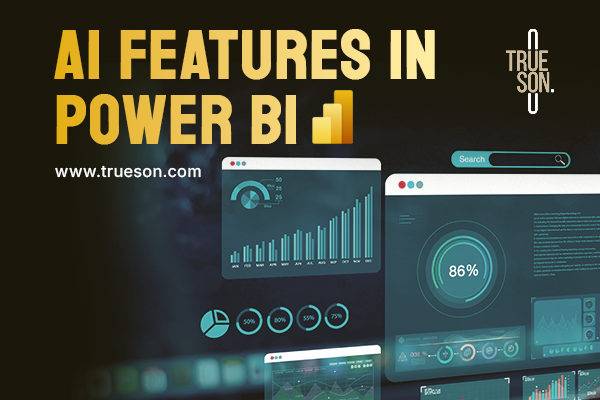To visualize CRM data in Power BI effectively, you have to deeply understand the tool and its features. In this blog, Trueson Power BI consultants will show you how Power BI functions to get the most insight out of your CRM data.
Customer Relationship Management (CRM) is a software system acting as a repository to bring all data of sales, marketing, and customer support activities together in a single platform. In order to have a greater understanding of CRM data and then to boost business performance, CRM’s integration with business intelligence tools, namely Tableau, Power BI, Qlik, etc., turning data into meaningful and decisive insights is necessary. These tools allow us to dive deeper into CRM data to evaluate trends, identify potential issues before their occurrence, understand the overall picture of business situations, and subsequently manage the business efficiently.
Among them, Power BI is one of the most popular solutions, which analyses data in depth and from multi-level perspectives.
1. Data connection:
As mentioned in the previous article, Power BI is powerful in integrating multiple data sources, both directly and indirectly. To create a connection with CRM, an URL, together with your credentials, is enough. From there, data can be loaded to create a dashboard.
This direct data connection is dynamic for Power BI to display up-to-the-minute information. Data can be simply refreshed through the button “refreshed” in Power BI Desktop or automatically through the scheduled refresh in Power BI service.
What is also remarkable is that data from CRM can be combined with data from other online sources such as web pages, SharePoint folders, SQL server, Azure services, LinkedIn, etc. or offline files ( PDF, CSV, excel, text, etc.) for more granular and multi-perspective analysis.
2. Data transformation:
Power BI is also an ETL tool (Extraction-Transform-Load) under the name Power Query. Once the connection is set up, data in CRM can be transformed in hundreds of ways such as sorting, grouping or splitting, merging, calculating, etc., to serve business needs. The M language also allows users to freely edit its data using code.
3. Relationship establishment:
Another outstanding element of Business Intelligence in general, and Power BI in particular, is the construction of relationships among reports. Data in CRM can be well-structured through a model, on the one hand, to ensure data integrity and on the other hand to enable multi-dimensional analysis for answering business questions.
For example, customers’ activities can be looked at from the perspective of time, location, and products. For each aspect, we can see data shown in different levels of generalization or specification (time: year-quarter-month-day-dates of the week, etc.).
4. Visualization-building reports:
After data is transformed and combined through relationships, various types of visuals such as bar charts, maps, line graphs, pie charts, etc. are available to interpret data insights and intrigue data storytelling to respond to business inquiries.
To conclude, CRM can be considered as a goldmine of information and Power BI is a tool that enables us to grasp the “gold”, which is rich informed insights to build up the business strongly.
Our Power BI Consultants are here to help
- Up-to-the-minute information from a variety of sources using Data Connection;
- Transform data according to the needs of the business, including sorting, grouping, splitting large data and so on;
- Construct data model with Relationship Establishment;
- Visualization-building reports.
Contact Trueson TODAY for initial consultancy!





